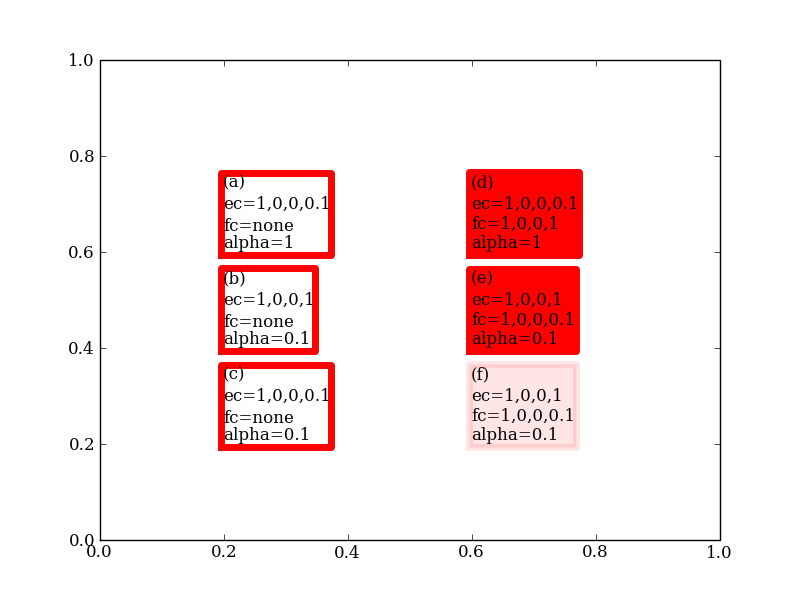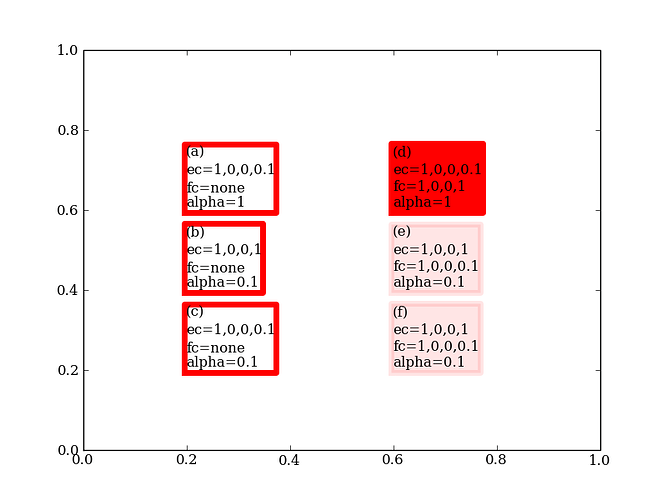Hi,
When drawing a patch, the alpha value of its edgeolor is ignored. The
following command draw a circle whose edgecolor has alpha=1, instead
of 0.1.
gca().add_patch(Circle((0.5, 0.5), 0.3,
ec=(1,0,0,0.1), fc="none"))
Attached is a little test script and its output.
It seems that the edgecolor always has an alpha value of the face color.
I'm not sure if this behavior is intended, but I personally think this
is a bug.
Regards,
-JJ
path-alpha_test.py (1.26 KB)

